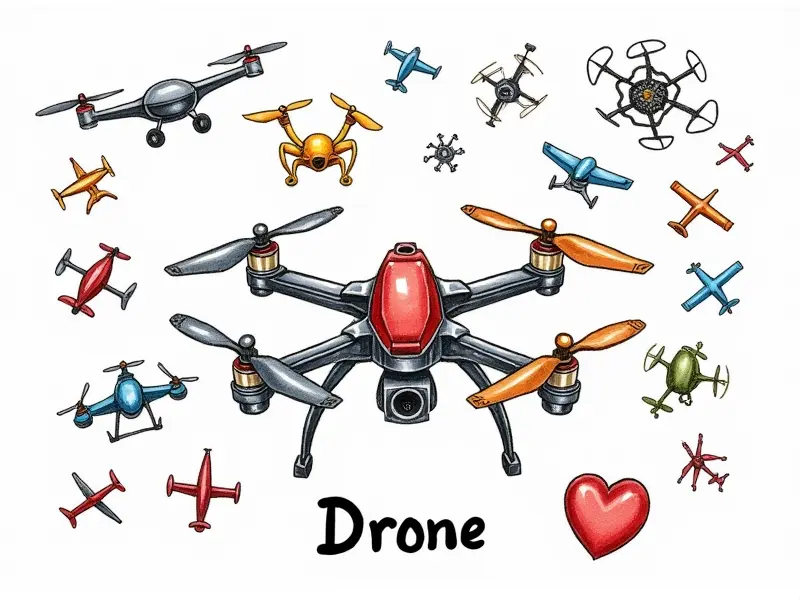What's a tail rotor for?

The tail rotor is an essential component of any remote-controlled (RC) helicopter, playing a crucial role in maintaining stability and control during flight. This article delves into the importance of tail rotors, their functionality, and how they contribute to the overall performance of RC helicopters.
Why RC Helis Need Tail Rotors
Remote-controlled helicopters rely on tail rotors for several critical functions that ensure safe and stable flight. Without a tail rotor, an RC helicopter would be uncontrollable due to torque effects caused by the main rotor. The tail rotor counteracts this torque, allowing the pilot to steer and maintain control over yaw movements.
Understanding the Role of Tail Rotors
The primary role of a tail rotor is to manage the anti-torque forces generated by the main rotor's rotation. As the main rotor spins clockwise (from the helicopter’s perspective), it creates a counter-clockwise torque that would otherwise cause the fuselage to spin in the opposite direction. The tail rotor counters this effect, enabling precise control over yaw movements.
Tail Rotor Functionality Simplified
At its core, the tail rotor works by generating thrust perpendicular to the main rotor's axis of rotation. This thrust is adjustable and can be increased or decreased by the pilot through a cyclic control mechanism. By changing the pitch angle of the tail rotor blades, pilots can steer the helicopter left or right.
Essential Guide to Tail Rotors
To fully understand the importance of tail rotors in RC helicopters, it's essential to know how they function and interact with other components like the swashplate. The swashplate system controls the collective pitch of the main rotor blades, while the tail rotor manages yaw control independently.
Yaw Control
The tail rotor is responsible for controlling yaw movements, which are rotations around the vertical axis of the helicopter. This allows pilots to turn the helicopter left or right without affecting its altitude or forward/backward movement.
Torque Compensation
A key function of the tail rotor is compensating for the torque generated by the main rotor. By adjusting the thrust produced by the tail rotor, it counteracts this torque and keeps the fuselage stable during flight.
Tail Rotor Basics for Beginners
For those new to RC helicopters, understanding the basics of tail rotors is crucial. Tail rotors are typically smaller than main rotors but play a vital role in maintaining stability and control. They consist of two or more blades that can change pitch to adjust thrust.
Tail Rotor Blade Design
The design of tail rotor blades includes features like blade pitch adjustment, which allows for fine-tuning the amount of thrust produced. This flexibility is crucial for precise yaw control and stability during flight.
The Purpose of a Tail Rotor in RC Helicopters
The primary purpose of a tail rotor in an RC helicopter is to provide directional control and maintain stability. It ensures that the helicopter can maneuver accurately without unwanted rotations caused by torque effects from the main rotor.
Yaw Control Mechanism
The yaw control mechanism involves adjusting the pitch angle of the tail rotor blades, which changes the amount of thrust produced. This adjustment allows pilots to steer the helicopter precisely in any direction.
How Tail Rotors Keep RC Helis Stable
Tail rotors are crucial for maintaining stability during flight by counteracting torque effects and providing precise yaw control. They ensure that the helicopter remains stable even when performing complex maneuvers like hovering or turning sharply.
Yaw Stability
The tail rotor's ability to manage yaw movements is critical for maintaining overall stability. By adjusting thrust, it prevents unwanted rotations and keeps the helicopter aligned with its intended flight path.
Tail Rotor: Key to Stability in RC Helicopters
A well-designed and properly functioning tail rotor is essential for achieving stable flight conditions in RC helicopters. It ensures that pilots can control yaw movements effectively, which is vital for maintaining balance during various flight maneuvers.
Yaw Control Precision
The precision of yaw control provided by the tail rotor allows pilots to execute complex maneuvers with ease and accuracy. This level of control enhances overall performance and safety during flight operations.
Tail Rotor Importance in RC Flight
The importance of a tail rotor cannot be overstated when it comes to remote-controlled helicopter flight. It is not just about controlling yaw movements but also ensuring stability, maneuverability, and precise control over the aircraft's orientation.
Yaw Control Versatility
A versatile tail rotor system allows pilots to perform a wide range of maneuvers with confidence. Whether hovering in place or executing sharp turns, the tail rotor ensures that these actions are smooth and controlled.
Understanding the Function of Tail Rotors
To fully appreciate the function of tail rotors, it's important to understand how they interact with other helicopter systems like the swashplate. The swashplate controls collective pitch changes in the main rotor, while the tail rotor manages yaw control independently.
Yaw Control Independence
The independence of yaw control provided by the tail rotor allows pilots to manage directional movements without affecting altitude or forward/backward motion. This separation ensures that each aspect of flight can be controlled precisely and efficiently.
Tail Rotor Basics for RC Pilots
For RC pilots, understanding the basics of tail rotors is fundamental to mastering helicopter control. Familiarity with how the tail rotor functions and interacts with other systems enhances overall piloting skills and flight performance.
Pitch Adjustment Mechanism
The mechanism for adjusting pitch in the tail rotor blades allows for fine-tuning thrust levels, which is crucial for precise yaw control during various flight maneuvers. This flexibility ensures that pilots can maintain stability and maneuverability effectively.
Conclusion
In summary, the tail rotor plays a vital role in maintaining stability and control in remote-controlled helicopters. Its primary functions include managing torque effects from the main rotor and providing precise yaw control. Understanding how the tail rotor works is essential for any RC pilot looking to achieve optimal performance during flight operations.

